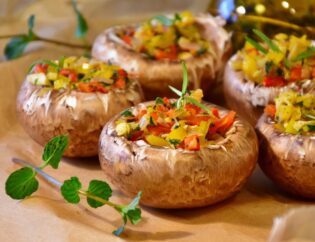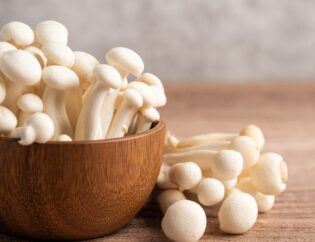
The forest harbors a wealth of diverse mushroom species, yet not all are fit for consumption. This article will guide you into the world of forest mushrooms, explaining which are safe to eat and how to identify the most popular edible forest mushrooms. Wondering which forest mushrooms you can eat? Join us in discovering the types of forest mushrooms and learn how to safely enjoy nature's gifts. We encourage you to read the entire article to dispel any doubts and savor the taste of true forest delicacies.
Types of Forest Mushrooms – An Overview of the Most Popular Species
Forest mushrooms are a treasure trove of flavor and health, captivating nature enthusiasts with their diversity. Among the most popular species that garner appreciation, we find:
- Boletus edulis (Porcini) - prized for its nutty flavor, it's a classic in Polish forests.
- Slippery Jack - known for its mild texture and juiciness, ideal for frying and pickling.
- Bay Bolete - offering a distinctive taste, it excels in sauces and soups.
- Chanterelle - distinguished by its unique golden color, it's perfect as an addition to meats and sauces.
Each of these species stands out not only for their taste qualities but also for their specific nutritional properties, making them not just delicious but also healthy. Discovering and exploring the diversity of forest mushrooms is a wonderful adventure, encouraging spending time in nature and taking advantage of its riches.
How to Recognize Edible Forest Mushrooms?
Identifying edible forest mushrooms requires knowledge and experience, as incorrect identification can lead to serious health consequences. The first step is to familiarize yourself with the distinctive features of the most popular edible species, such as the shape of the cap, color, type of gills, and the environment in which the mushroom most commonly appears. It's crucial to only collect mushrooms you are 100% sure about. You should avoid mushrooms with unusual colors, such as bright ones, which may indicate their poisonous properties. Mushrooms with gills under the cap are often toxic, in contrast to those with tubes, which mushroom pickers commonly refer to as "sponge." Another important aspect is the condition of the mushroom - do not collect old, spoiled specimens. Utilizing mushroom guides, mobile apps, or participating in excursions with experienced mushroom pickers can significantly aid in learning how to recognize edible forest mushrooms, ensuring a safe and satisfying experience while foraging.
Tips for Beginner Mushroom Pickers – How to Safely Forage Mushrooms?
Foraging for mushrooms is an engaging hobby that can bring a lot of joy, but it's crucial for beginners to remember a few key safety tips. First and foremost, only collect mushrooms you are well-acquainted with. Avoid those with unusual colors or shapes that could indicate poisonous properties. Always use a knife to harvest mushrooms, which helps prevent damage to the mycelium. Additionally, carrying a reliable mushroom guidebook or mobile app is essential for identifying your finds. Never gather mushrooms near polluted areas, such as roads or industrial zones, as mushrooms can absorb harmful substances. It's also beneficial to bring along an experienced mushroom picker who can assist in species recognition. By keeping these simple tips in mind, you can enjoy safe and fruitful foraging for edible forest mushrooms.
Common Mistakes While Mushroom Foraging – How to Avoid Them?
When foraging for mushrooms, it's easy to make mistakes that can have unpleasant consequences. One of the most common errors is lacking proper knowledge about the species being collected, which can lead to gathering poisonous mushrooms. It's crucial to only collect mushrooms you are certain about and always use reliable guides for identification. Another mistake is collecting a large amount of mushrooms at once without realizing that mushrooms spoil quickly. To prevent waste, it's essential to properly prepare mushrooms for storage right after harvesting, whether by drying, pickling, or making dishes and preserves immediately. Additionally, avoid collecting old and spoiled specimens, which can be breeding grounds for bacteria and parasites. Remember also to not harm the natural environment and to handle the mycelium with care. If you're not confident in your knowledge of forest mushrooms, you can always turn to safe and verified products. Anslaw offers a wide selection of edible forest mushrooms that can be a perfect addition to your customer’s diet without the need for personal knowledge. Explore our range and enjoy the taste of true forest mushrooms with no worries.





